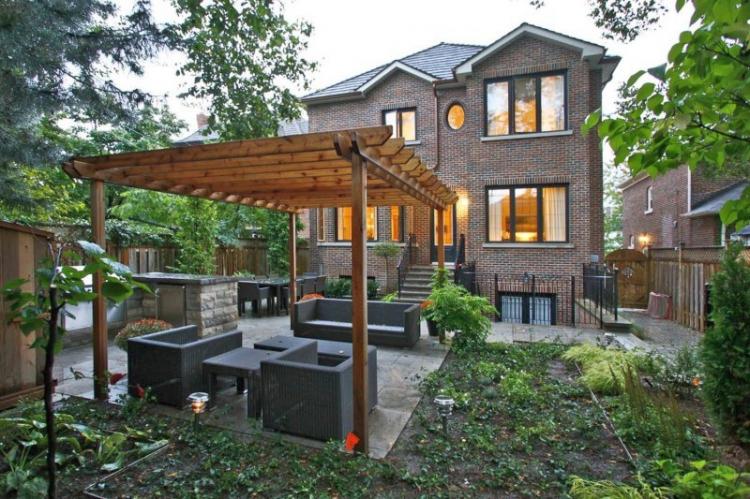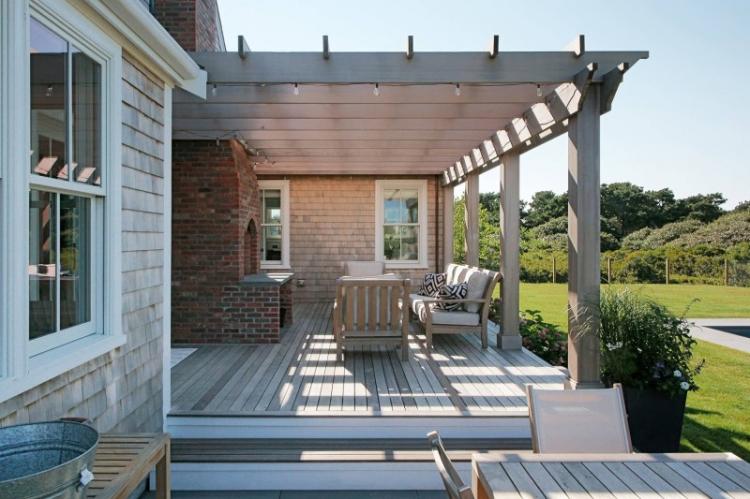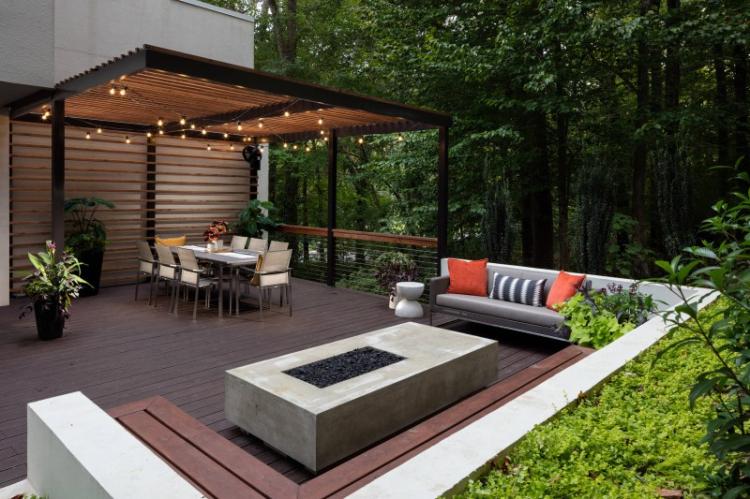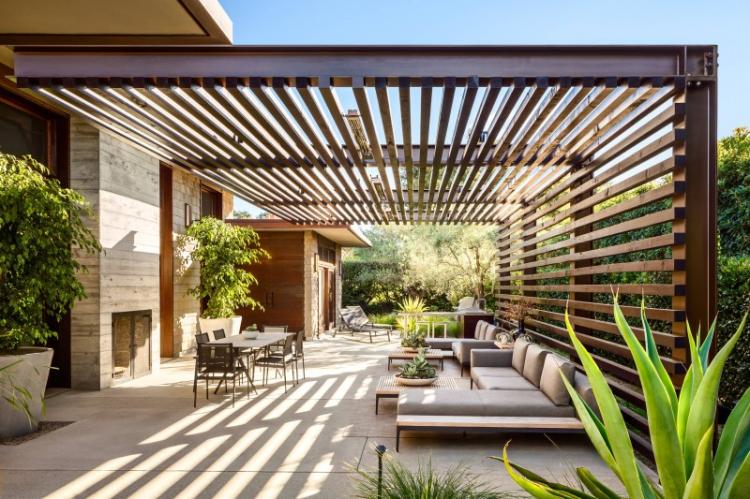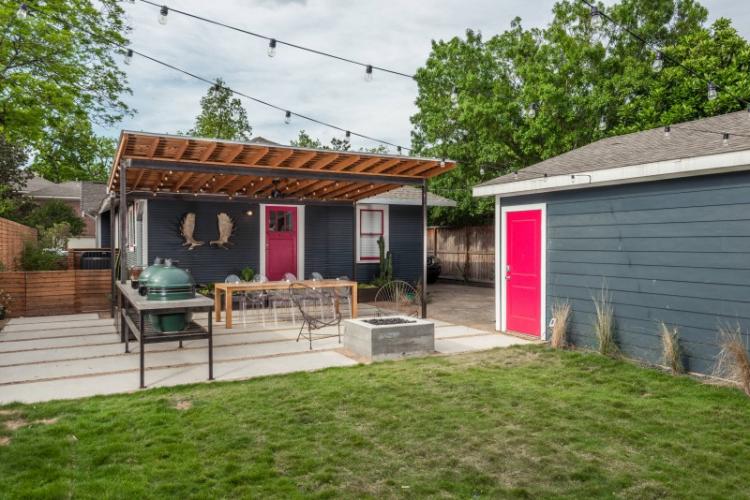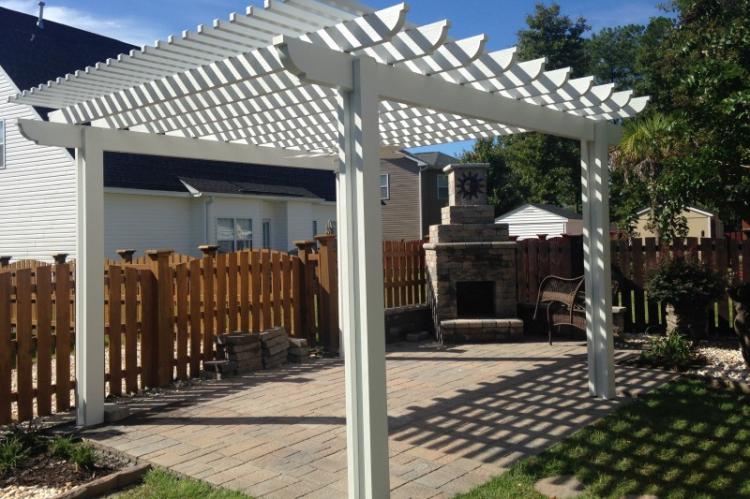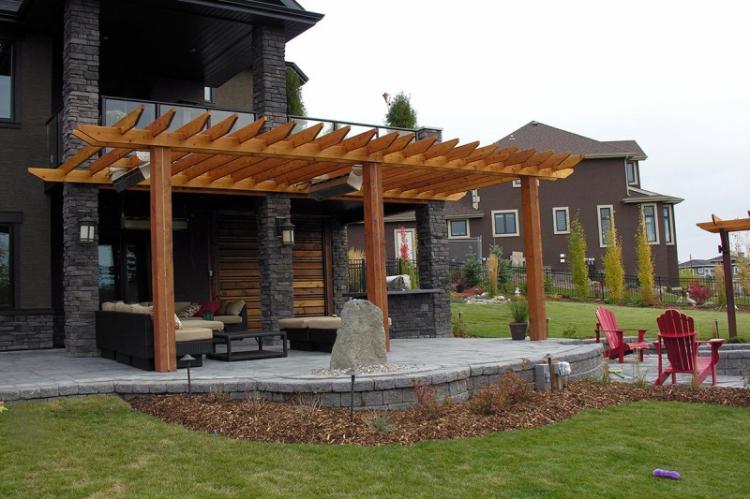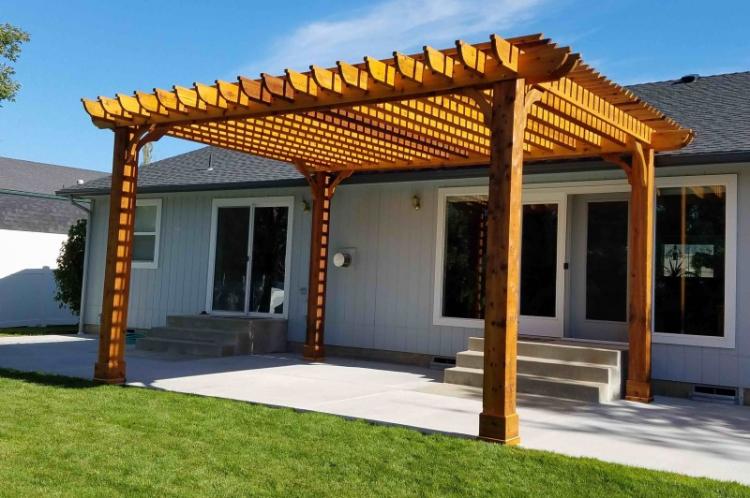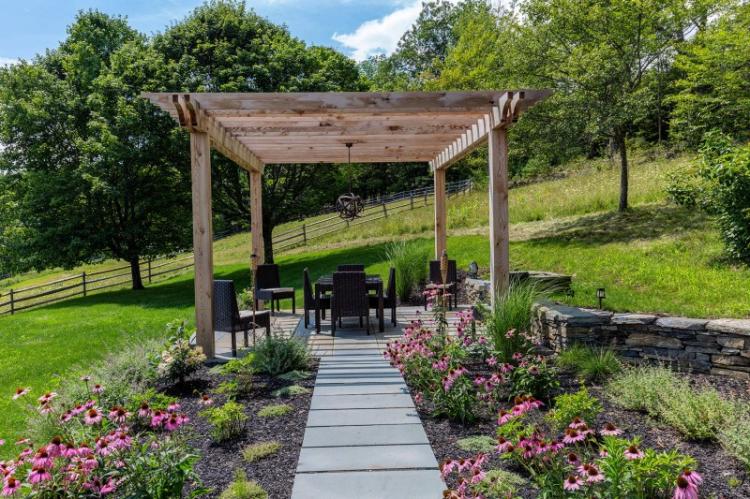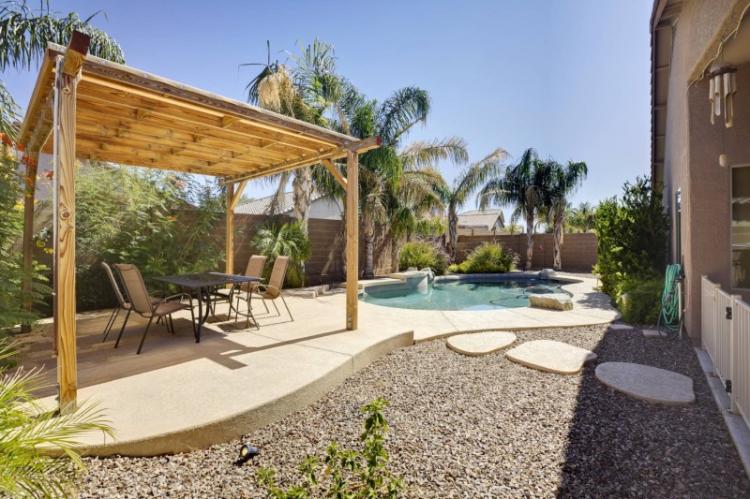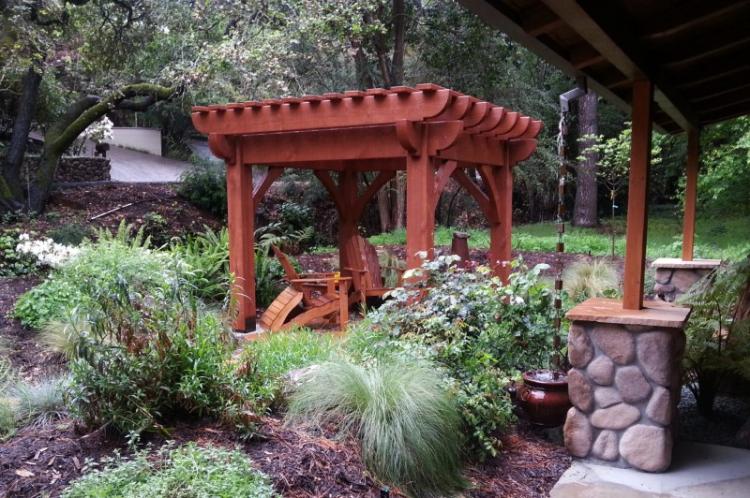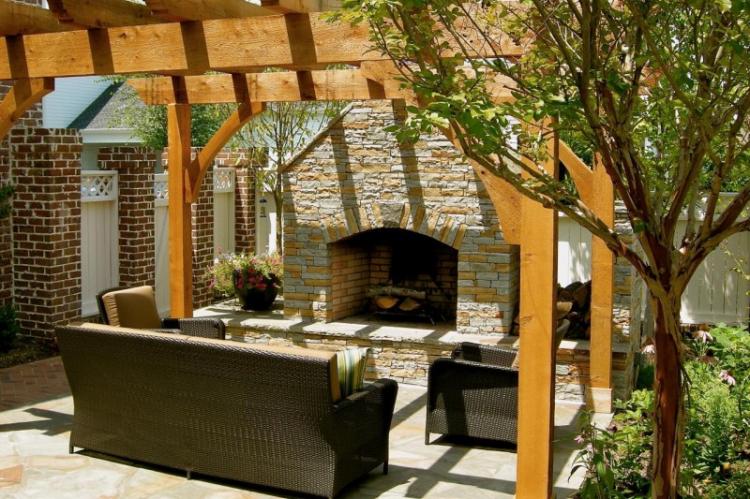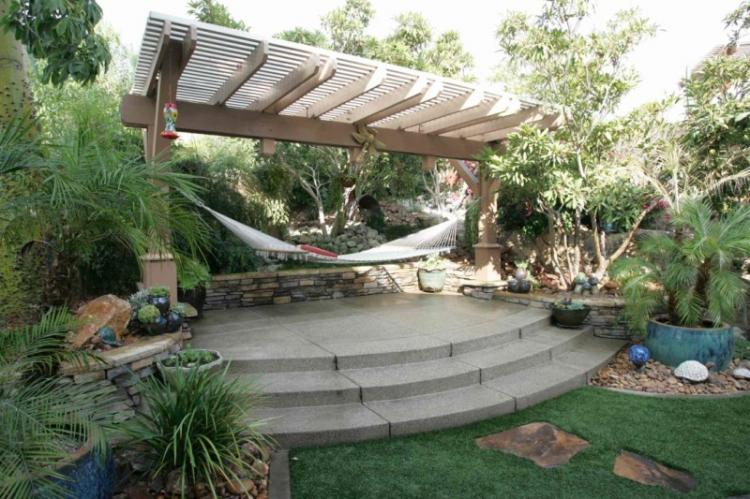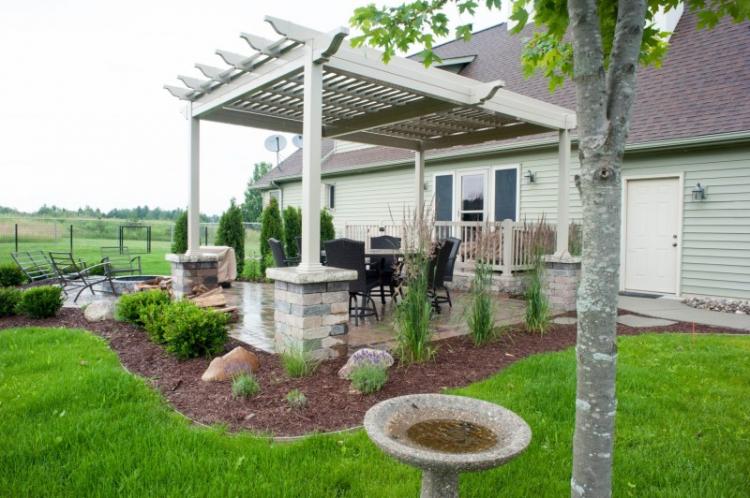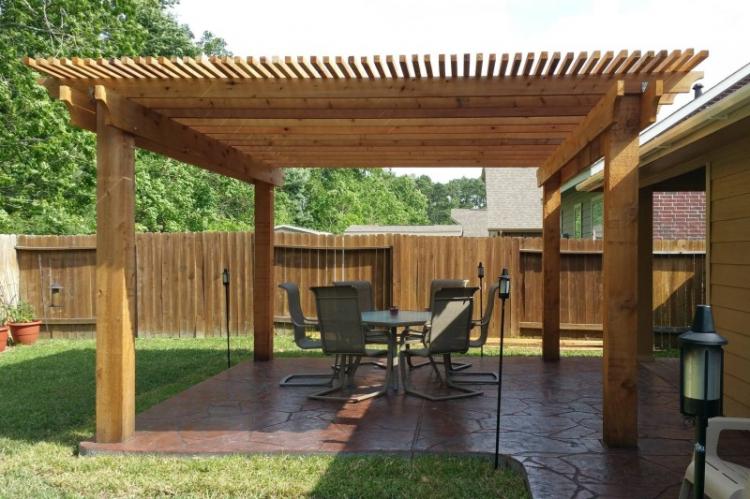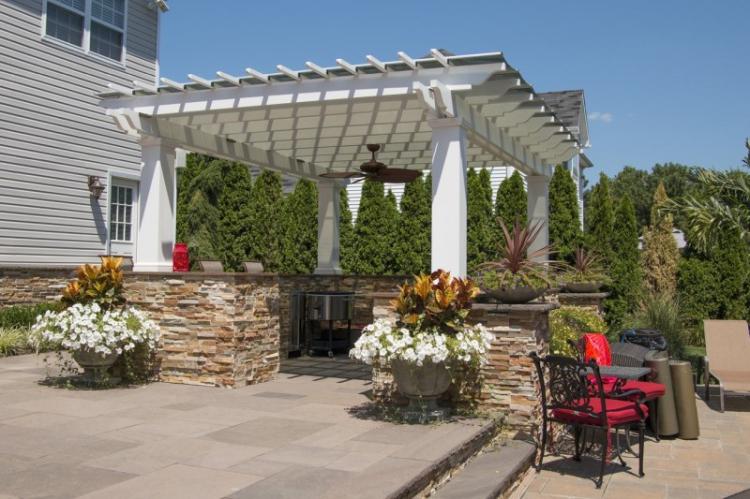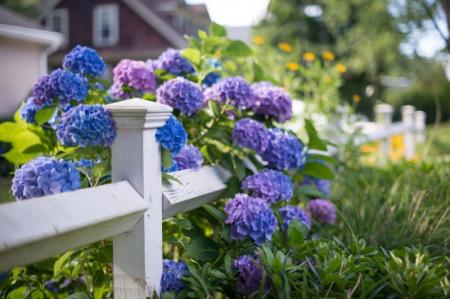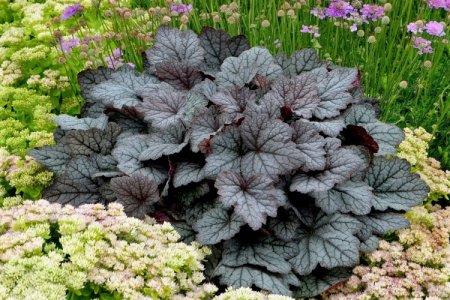
Pergola is an elegant find that came to us from the Mediterranean. As far back as ancient Rome, graceful and practical awnings were used to support the vine. And at the same time for darkening terraces, as well as individual areas from the scorching sun rays. Now pergolas are an irreplaceable attribute of landscape design. They differ in form and performance, but invariably give lightness, freshness and coolness on hot summer days.
What is a pergola?
The classic pergola is a canopy. Climbing plants twine around a frame support made of arches and transverse beams. This can be a separate structure, an extension to a building, or even a canopy over a window.
Pergolas are used for making separate terraces, corridors, and fencing pools. Their architecture is becoming more and more diverse. And the designers create real artwork and shadow drawings.
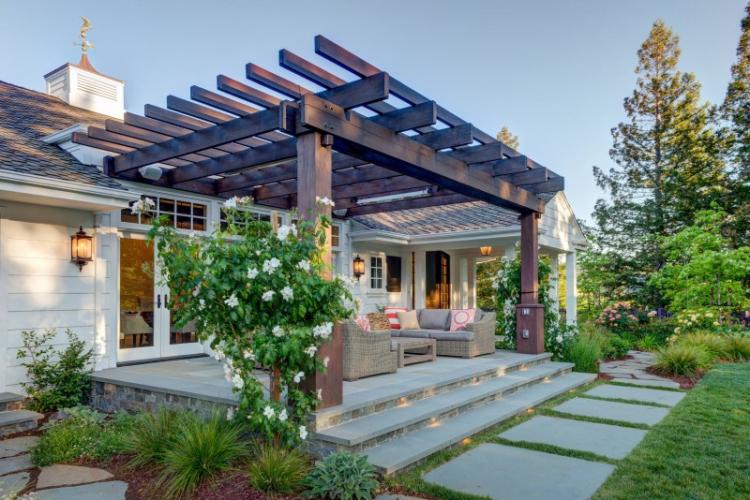
Pergolas and berso
It is easy to confuse a pergola with a berso. Bersault are covered galleries that stretch along paths and alleys. Climbing shrubs are planted on both sides. They grow, stretch upward and create a continuous tunnel.
In the late Middle Ages, bersot was created from elastic willow twigs. Young shoots were intertwined at the tops and connected with thin strips. So a living corridor was formed.
Pergola differs from bersot in that it is a more permanent frame structure. And its landscaping is created by climbing plants, and not shrubs and trees planted in a special way. Although now these lines are increasingly blurred.
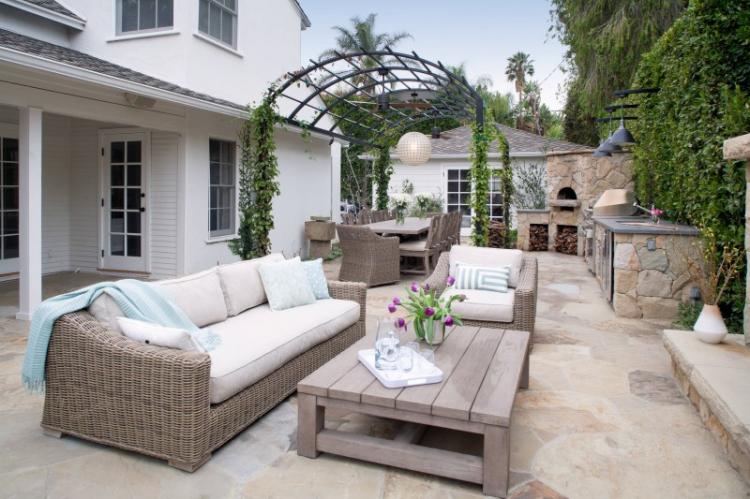
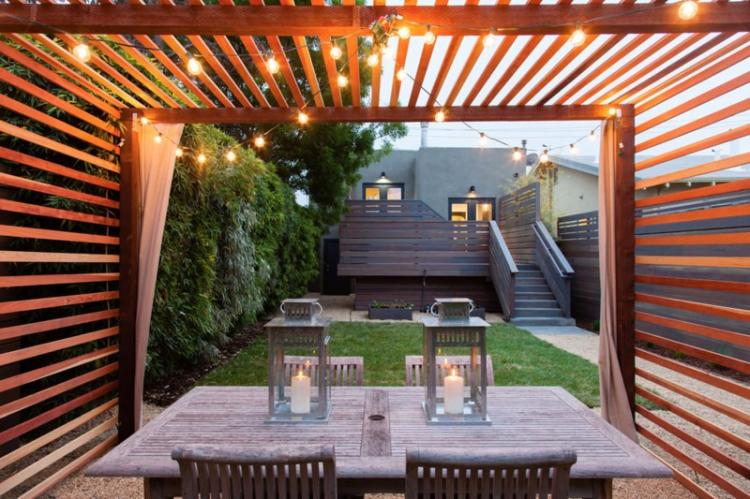
Pergola styles
If the old pergolas were pretty monotonous, now you can decorate it in any style. Here are some options for inspiration:
- Classics. This is a strict and discreet frame made of beams with lattice overlap. Minimalistic and elegant at the same time. And if you want to add modernity, take metal instead of wood.
- Country style. Simplicity, naturalness and deliberate rudeness are in fashion. The aged wooden beams on massive pillars seem to have left the pages of fairy tales and legends. And the more the greenery grows, the stronger this effect.
- Palace style. It is power and luxury. Massive columns with forged inserts, stone elements and arches, monumental pillars, powerful vines and weaving rose bushes will set the right mood.
- East style. Elegant, lightweight, openwork designs are especially good from precious wood or bamboo. But keep in mind that this is more a decorative than a functional solution.


Types of structures
By design, several types of pergolas can be noted:
- Awnings. The simplest and most common. The canopy is adjacent to the house. Install this over the veranda, playground, as an easy summer shelter for cars and equipment. But keep in mind that the pergola does not protect from the rain.
- Visor. Small and sleek, it will neatly shade south windows without heavy and bulky curtains. It's also a good option for energy efficient homes. It reduces the heat load, and you can save money on the operation of the air conditioner.
- Screen. This is a structure for zoning a territory. Make a secluded corner in the garden, closed from prying eyes. This pergola is well suited for vineyards and other climbing plants.
- Arch or tunnel. The green arch is the most difficult to execute, but it is also the most luxurious and elegant. You can design passages and paths like this, creating an atmosphere of mystery and romance. A tunnel is a series of arches connected to each other.
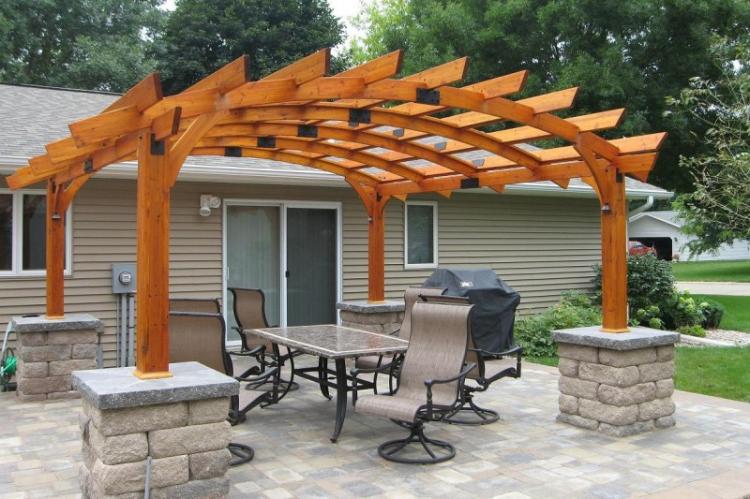

Materials for making
When choosing a material, take into account the location of the structure and the load to which it is subjected. The denser the landscaping, the stronger the frame should be.
Wooden pergolas
Wood is the most affordable and popular material for creating a pergola.It harmoniously fits into any exterior or style, combined with other elements of landscape design.
Wooden pergolas are beautiful and practical. The variety of breeds allows you to experiment with texture. In addition, you can definitely find an option for your budget.
But keep in mind that the tree is sensitive to the weather: humidity, sun, cold and temperature extremes. In the southern regions, it will last longer. But we must not forget about protection.
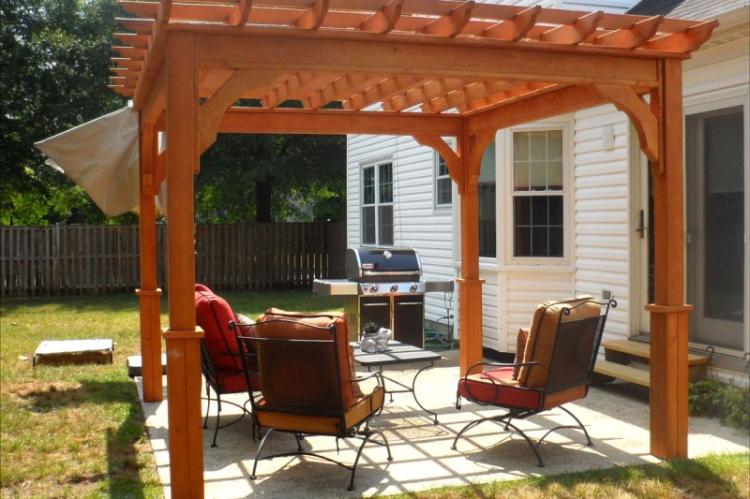
Metal pergolas
Artistic forging opens up boundless space for imagination. This is a rather expensive pleasure, but such products delight with their beauty for decades, or even centuries.
Metal pergolas are stronger and more reliable. They do not require any special maintenance, regardless of the season. And finely crafted lattices can be much more elegant than even bamboo ones.
A modern and functional option is complex aluminum structures. Bioclimatic awnings are made of light swivel slats, so you can adjust the amount of sun that enters through the awning. But such pergolas are almost impossible to fully plant with plants.

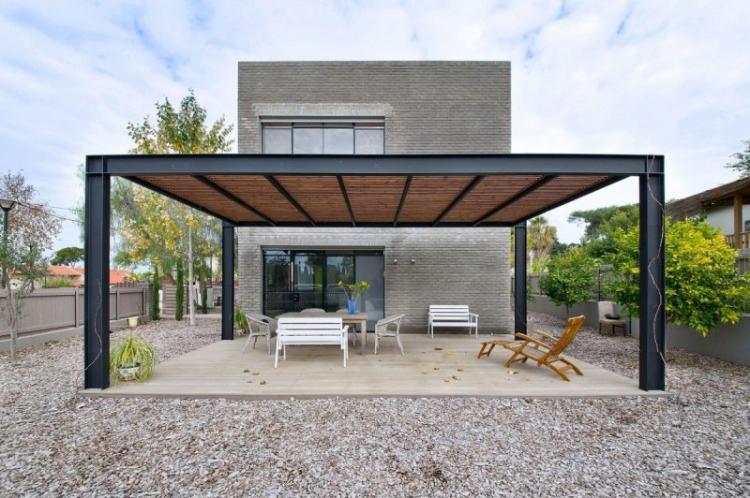
Other options
For the manufacture of pergolas, plastic, metal-plastic, bamboo and even glass elements are also used. Combinations of different materials also look advantageous. For example, wood with forged elements, stone foundations with metal structures, lightweight plastic and aluminum.
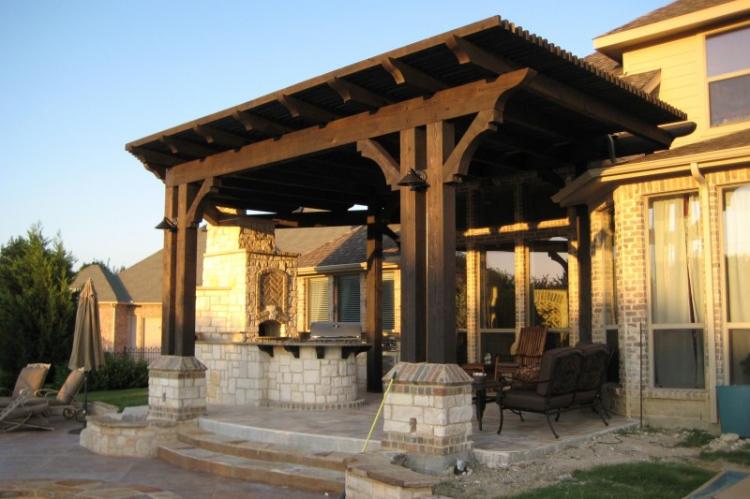
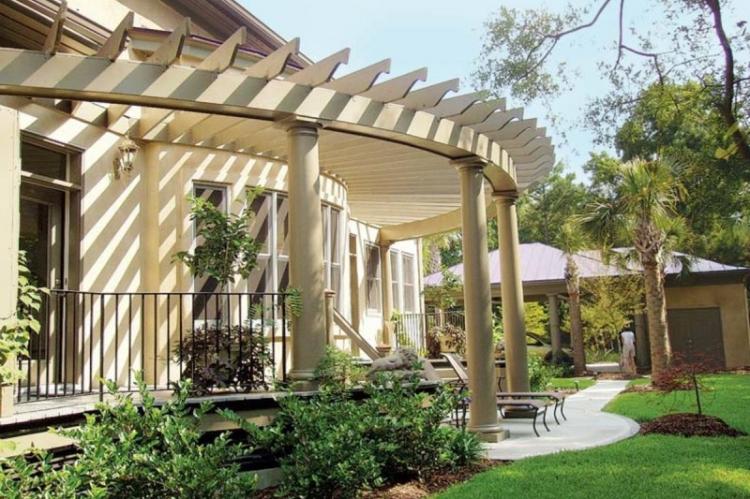
Where to install the pergola?
The choice of location directly depends on the shape and purpose of the structure. We offer you some ideas!
Separate zoning screens are great for separating the outdoor dining area. It will be possible to gather in the yard with friends or relatives, but hide from the sun and wind.
By the pool or pond, you definitely cannot do without shading. Even a small screen or canopy will be enough to shelter armchairs or sun loungers from the sun. And now you can safely enjoy your vacation without risking sunstroke.
A pergola adjacent to or extending to your home is ideal for protecting your veranda or summer kitchen. This is a simple, sleek and convenient option for small areas or backyards.
Pergolas of complex configuration are suitable for creating separate areas. Make a gazebo with benches, a barbecue area, fence a playground. After all, a pergola is more graceful than any fence, and fits better into the landscape.
Small compact pergolas can also be used to separate the work area. Protect your flower bed or your favorite seedlings so that they are not damaged on a hot summer day. Moreover, unlike fences and fabric awnings, the "green" curtain is perfectly blown.


Making a pergola with your own hands
Even before the design stage and material selection, you need to decide what tasks the pergola will perform:
- Correction of plant growth;
- Camouflage of technical and utility buildings;
- Zoning of space;
- Decoration of the site;
- Temporary seasonal decoration;
- A full-fledged "green" corridor or gazebo;
- Connection of several buildings or sites;
- Shadow creation.
For example, a decorative pergola can be more complex and fragile. But the structure for plant growth must be stronger and withstand loads of up to several kilograms.
The size
Keep in mind that too large and massive pergola in a small summer cottage looks bulky and ridiculous. And too small runs the risk of not supporting the weight of the plants. It is best to calculate the dimensions in conjunction with the rest of the structures and objects on the site.
Remember that plants grow as they grow every year - both in size and weight.
The recommended height of the frame support is up to 2.5 m, within which it remains stable. For the same reasons, the metal pipe structure should not be too narrow and high.
And for the pergola to look elegant, its width should be greater than its height.A violation of the proportions has the opposite effect, and also badly affects reliability.
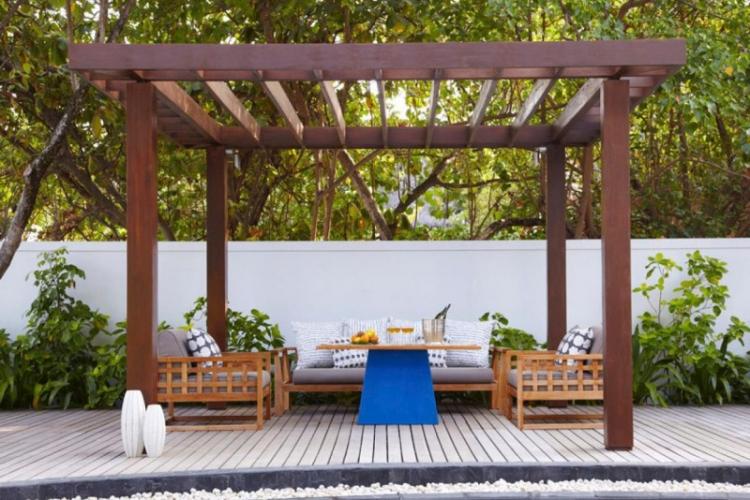
Form
A pergola is not necessarily a straight canvas or arch. They can be oblique and rounded, square and polygonal. The more complex the configuration, the more difficult it is to build it, but this fully pays off with the beauty of the finished structure.

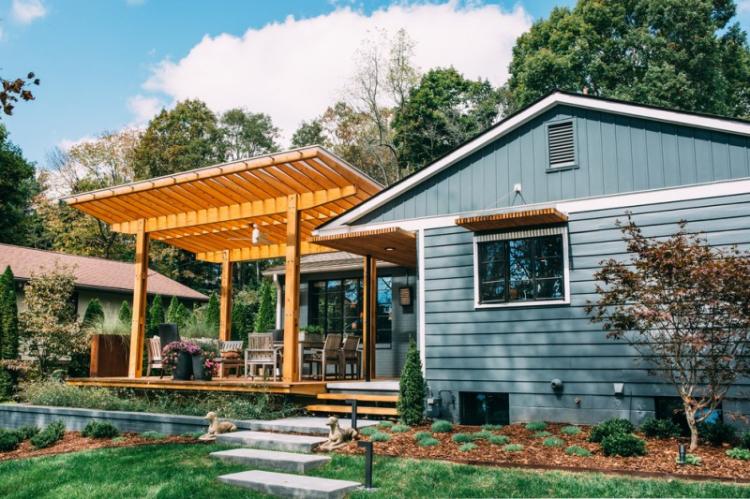
Colour
Most relevant in landscape design are the same natural shades. First, decide whether the pergola should merge with the local area or vice versa - become a bright accent.
When working with wood, you can safely use its main advantage - a natural pattern. He always stays in trend. There are special antiseptics and impregnations to protect the frame.
Another classic is snow-white performance. The light design looks lighter, but at the same time it stands out brightly against the background of dense greenery. This pergola looks solemn and elegant.
Using multiple materials is a great excuse to play with their textures. For example, black forging with bright, valuable woody species. Or a white stone with light or contrasting dark wood.
Feel free to combine a contrasting pergola with other landscape elements: fences and barriers, curbs, garden furniture.

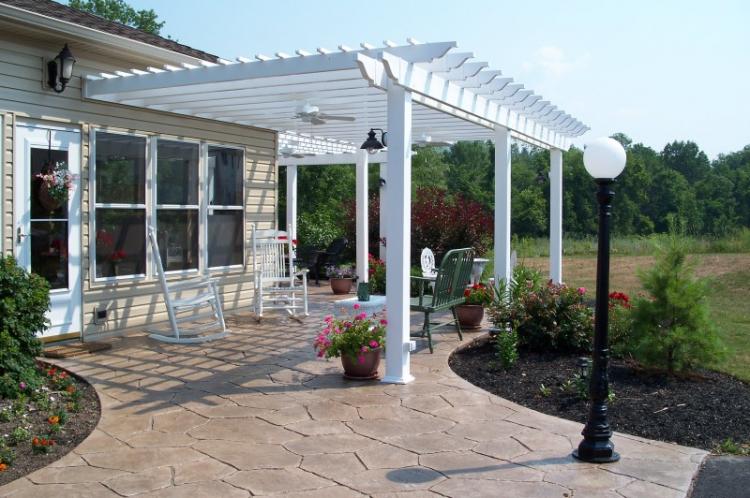
Construction stages
The specifics of creating a pergola depends on what shape and configuration you choose. We will consider the classic version:
- Draw up a drawing and write all dimensions on it;
- Calculate the number of beams that will be needed for the construction;
- Dig out recesses for the supports 80-90 cm;
- Lay gravel on the bottom of the holes;
- When installing supports, be sure to follow their level;
- Fill the pillars with concrete and leave for a couple of days until it hardens;
- Insert the frame beams into the supports;
- Use mechanical fasteners for fastening - bolts, corners, strips;
- Drank the joining grooves on the roof beams;
- Lay them across on the supports;
- Maintain a distance of up to 30 cm.
Durability and reliability
To make the pergola stronger, use perpendicular crossbars in 50-60 cm increments. Do not forget to fasten everything with bolts. Glue is not the best option for garden decor.
The foundation is laid for massive and complex structures. Columnar or, less commonly, tape. For medium-sized ones, metal crutches with a pitch of 40-60 cm are enough.
To make the large arched pergola stronger, install slopes between the support and load-bearing beams. Diagonal pieces are attached at a 45 degree angle.
But do not overload the pergola with unnecessary massive details. Lightness and elegance are the main features of the garden decor.
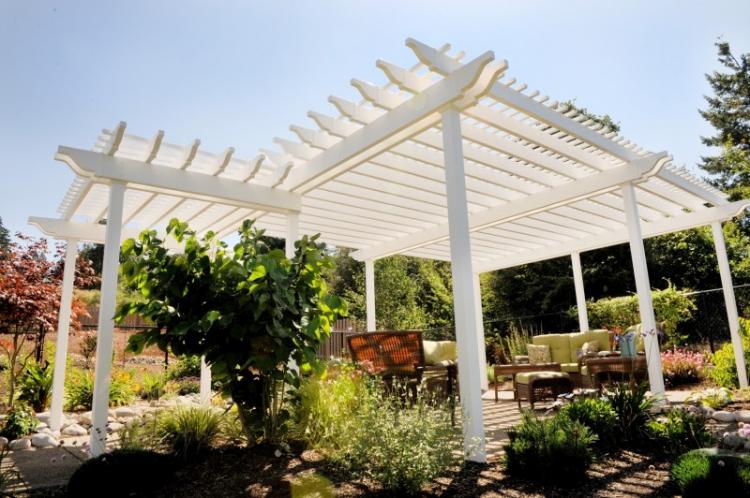
Pergola plants
It is not necessary to plant a pergola with only one plant. But choose varieties with approximately the same development and growth times. So the hedge looks neater, and different types do not interfere with each other.
Experienced gardeners do not recommend combining more than 3 species, otherwise they are too difficult to care for. And the pergola itself runs the risk of becoming overly motley and sloppy over time.
Fences from varieties with pronounced seasonal changes look interesting. They change completely depending on the season.
Be sure to choose species that are adapted to the climate of your region. If it turns out that an unusual variety of vines requires shelter from frost, you will have to urgently decide how to painlessly remove it from the crate.
The simplest and most common varieties are a variety of grapes, including wild, climbing roses, honeysuckle, honeysuckle. All of them are unpretentious, do not require frequent watering, tolerate heat well and delight with a delicate aroma.
Girlish grapes, for example, grow rapidly, intertwine the most complex and bizarre supports and feel great in any conditions. And in the fall, it also changes the color of the foliage to a rich crimson.
But clematis are much more sensitive to the weather and the neighborhood. And also to cold weather, humidity and drafts.

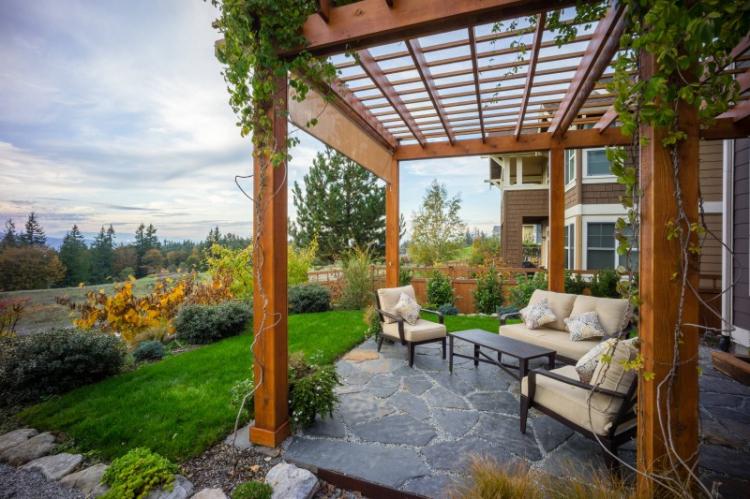
Pergola - photo
To make your favorite green corner delight you with grace and elegance, we have prepared this selection of photos with beautiful examples of pergolas in landscape design. Watch and be inspired!
